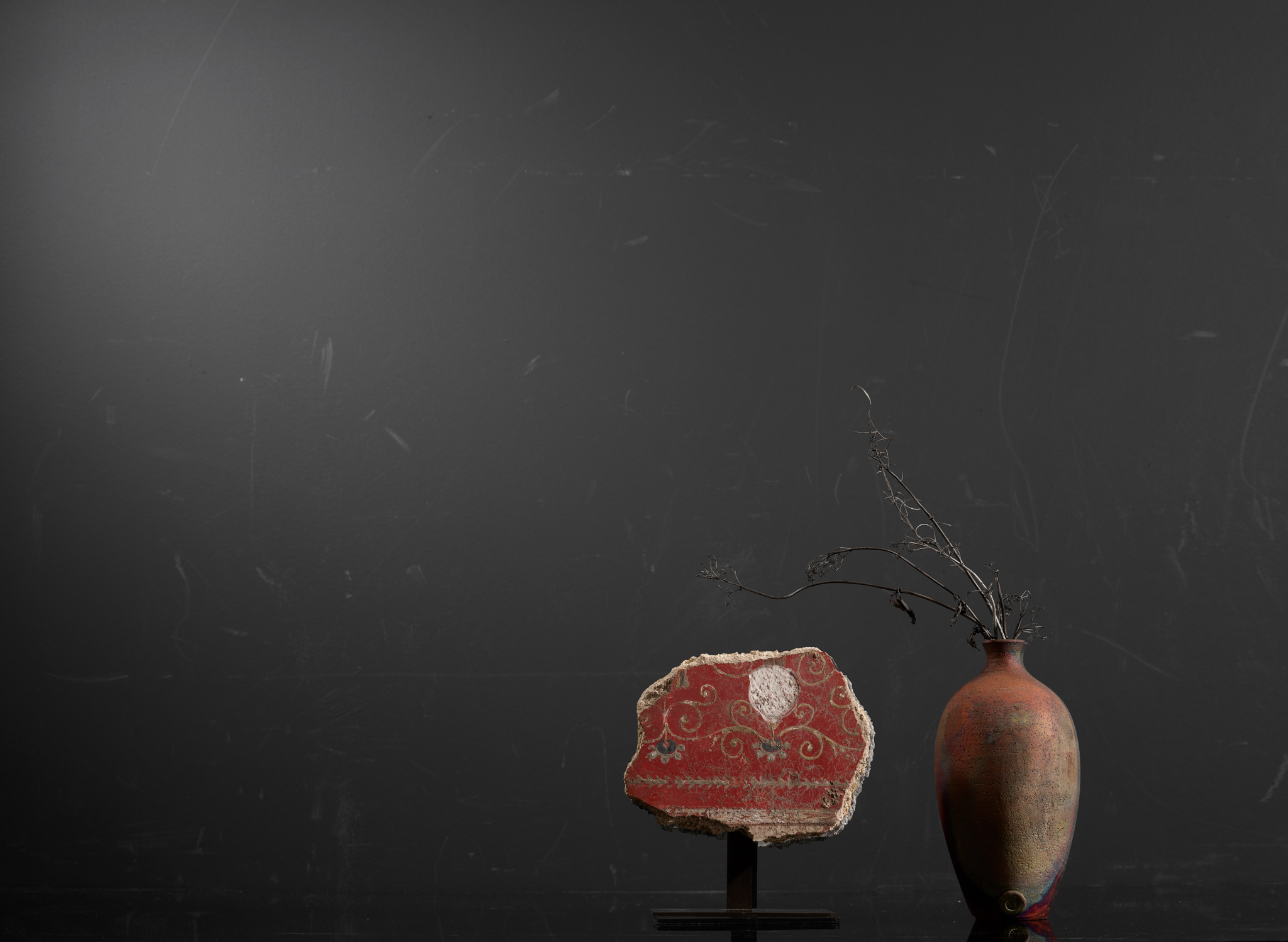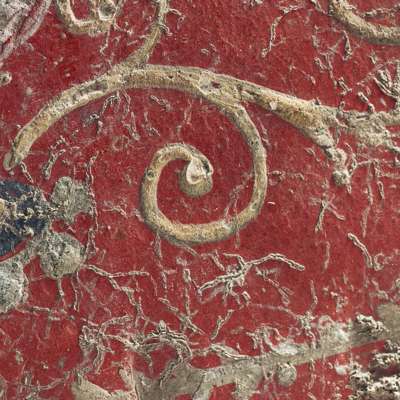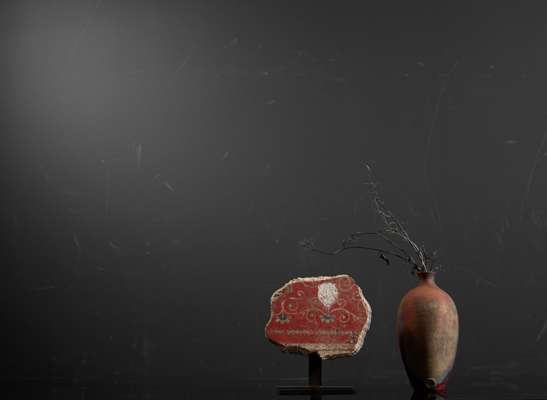
Lot 31

ROMAN FRESCO FRAGMENT
C. 1ST CENTURY A.D.






Classical Ancient Art // Form Through Time
Auction: Form Through Time - 21st March 2024 at 2pm
Description
pigment painted on plaster, the elegant tendrils of a white vine twist across a red ground, bordered below by a vegetal motif, accompanied by a 19th century leather case
Dimensions
Width: 15.5cm
Provenance
Provenance:
Bonhams, London, New Bond Street, Antiquities, 28th November 2019, lot 117
Mitsukoshi Department Store, Tokyo, by 1974 (catalogue illustration available on request)
Judging from the accompanying custom-made leather box, the present piece was part of a collection formed in the nineteenth century or earlier. Compare, for instance, another fragment kept in a case of the same style and with a label reading "Fragment de Pompéi provenant de la vente Préat 1868", Sotheby's New York, 12 December 2013, Antiquities sale, lot 84
Footnote
Note:
Outside of sculpture, fresco painting is the best known of all the Roman visual arts. The vast majority of surviving examples originate from the region around Mount Vesuvius, as they were preserved following the eruption of the volcano in 79 A.D. Pliny the Elder, whose life was taken in the aftermath, was a contemporary of this style of painting, and wrote the following:
‘‘Ludius … was the first to introduce the fashion of covering the walls of our houses with most pleasing landscapes, representing villas, porticos, ornamental gardening, woods, groves, hills, fishponds, canals, rivers, sea-shores, and anything else one could desire.’’





